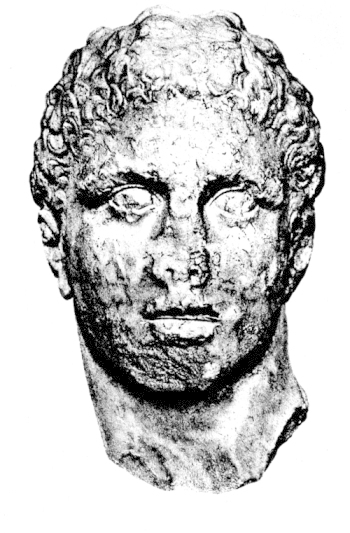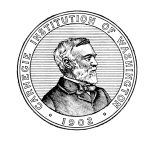OLYMPIC VICTOR MONUMENTS
AND
GREEK ATHLETIC ART
BY
WALTER WOODBURN HYDE
Published by the Carnegie Institution of Washington
Washington, 1921
CARNEGIE INSTITUTION OF WASHINGTON
Publication No. 268
PRESS OF GIBSON BROTHERS, INC.
WASHINGTON, D. C.
PREFACE.
The purpose of the present work is to study what is known of oneof the most important genres of Greek sculpture—the monumentserected at Olympia and elsewhere in the Greek world in honor ofvictorious athletes at the Olympic games. Since only meagre remnantsof these monuments have survived, the work is in the main concernedwith the attempt to reconstruct their various types and poses.
The source-material on which the attempt is based has beenindicated fully in the text; it is of two kinds, literary and archæological.To the former belong the explanatory inscriptions on thebases of victor statues found at Olympia and elsewhere, many of whichagree verbally with epigrams preserved in the Greek Anthologies; theincidental statements of various kinds and value found in the classicalwriters and their scholiasts; and, above all, the detailed works of thetwo imperial writers, the elder Pliny and Pausanias. Pliny’s accountof the Greek artists, which is inserted into his Historia Naturalis as adigression (Books XXXIV-XXXVI)—being artificially joined to thehistory of mineralogy on the pretext of the materials used—is,despite its uncritical and often untrustworthy character, one of ourchief mines of information about Greek sculptors and painters. Theportions of Pausanias’ Description of Greece which deal with Elis andthe monuments of Olympia (Books V-VI), although they also evincelittle real understanding of art, are of far more direct importance toour subject, since they include a descriptive catalogue, doubtlessbased upon personal observation, of the greater part of the athletemonuments set up in the Altis at Olympia, the reconstruction ofwhich is the chief purpose of the present work.
To the archæological sources, on the other hand, belong, first andforemost, the remnants of victor statues in stone and metal which havelong been garnered in modern museums or have come to light duringthe excavation of the Altis. To this small number I hope I haveadded at least one marble fragment found at Olympia, the head of astatue by Lysippos, the last great sculptor of Greece (Frontispiece andFig. 69). To this second kind of sources belong also the statue basesjust mentioned, on many of which the extant footmarks enable us todetermine the poses of the statues themselves which once stood uponthem. Furthermore, an intimate knowledge of Greek athletic sculpturein all its periods and phases is, of course, essential in treating aproblem of this nature. Here, as in the study of Greek sculpture ingeneral, where the destruction of original masterpieces, apart from thefew well-known but splendid exceptions, has been complete, we arealmost entirely dependent upon second-han

